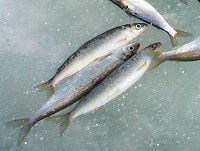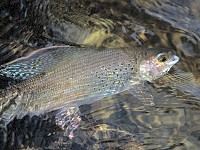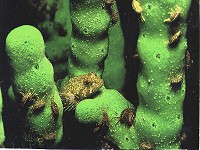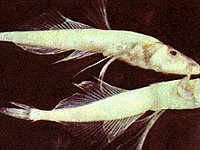| Origin & Development | |
|
Legends & Fairy tales • Earth's Crust Thickness • Underwater Relief • Landscapes • History & Formation • Seismic Activity • | |
| History of Lake Baikal | |
|
History of Explorations • Inhabitants & Settlers • First maps of Baikal • Archaeological Sites • | |
| Lake Baikal Climate | |
|
Introduction • Fogs • Winds & Waves • Ice Conditions • | |
| Fauna & Vegetation | |
|
Mammals • Baikal seal - Nerpa • Ichthyofauna • Invertebrates • Vegetation • | |
| Water of Lake Baikal | |
|
Colour • Transparency • Temperature • Pressure • Depth • Currents • Budget • Chemical Composition • Pollution • | |
| Recreational Areas | |
|
Circumbaikal Railway • Peschanaya Bays • Olkhon Island • Chivirkuysky Gulf • Wooden Irkutsk • Trans-Siberian Railway • | |
| People of Lake Baikal | |
|
People of Siberia • Buryat nation in Baikal • Russians in Baikal • | |
|
| |
| Fauna of Lake Baikal Baikal has 53 species of fish which belong to 13 families. The Baikal ichthyofauna has formed as a result of freshwater fish getting into the lake at different times. All the fish according to its origin and habitat conditions can be subdivided into several groups: 1. The fish characteristic of Siberian valley reservoirs such as sturgeon, pike, eel-pout, ide, roach, dace, perch, minnow occupy mostly coastal shallow waters, half closed bays ("sory") and river mouths; 2. Siberian mountain rivers fish: grayling, taimen, lenok inhabit small inflowing streams of the lake and its coastal area; 3. To estuaryarctic fish belong omul and sig (white fish), the former of which lives both in open and coastal parts of the lake while the latter is spread only in the coastal area. Omul, sig, as well as grayling are members of the salmonidae family.
It is assumed that the ancestors of omul got into Baikal from the polar regions - Arctic ocean. One theory is that there was a time when a group of omul, going with the stream up Arctic rivers to spawn, came to Baikal and favoured these conditions for breeding and development. Probably the rout of infiltration of this fish drove on Yenisei and Angara rivers. The omul's colonization of Baikal and its adaptation to new living conditions appeared to be Nature's tremendous experiment, revealing flexibility and adaptability of aquatic organisms to changes of the environment. Omul biomass in Lake Baikal by data of the survey made on May 25 - June 5, 1999 = 26000 ton (300 000 000)
Sturgeon. Special place in the lake's ichthyofauna is taken by the Baikal sturgeon which largely inhabit the areas of the Baikal's major tributaries: the delta zone of the Selenga River, Proval Bay, Chivyrkuy and Barguzin Buys. The sturgeons migrate widely throughout the whole lake alongside the coastal line of Baikal, swimming into bays and coves. In former times, the sturgeons caught used to weigh about 250 pounds, yet, they grow slowly and mature late.
Golomyanka is the main and the most numerous inhabitant of Baikal, but it very seldom gets into fishermen's nets. Its resources amount for about 150 thousand tons, but on neither of its life stages does it swim in great gatherings or schools, and, that's why, it's not entered in the food-fish list. Its predator is nerpa (the Baikal seal), for which golomyanka is the staple diet. Golomyanka is a very independent fish and quite different from its relatives who tend to shoal. It prefers a solitary existence. Golomyanka fish lives down in the depth of Lake between 700-1600 feet where the water temperature is low. It is noted that the golomyanka is very sensitive to the temperature of water. The temperature of up to +5°C is optimal for it, it avoids higher temperatures, and +10°C is mortal for it. This fish is small in size, 15-20 cm long. It's designed to live in extreme pressures. Interesting are vertical migrations of Golomyanka from small depth to bottoms of very deep depressions, where even a cannon cannot shoot (because of the enormous pressure). Golomyanka moves up and down obeying the waves. This is probably due to the absence of swimming bladder and strong fins. During migrations the change of pressure leads to forced stops necessary for the adaptation to existing conditions. At night Golomyanka rises to the water surface, and at daytime it swims down to great depths. Each autumn the females being viviparous instead of laying eggs produce 2000-3000 of larvae ready to swim progeny and after that they are generally died. SYSTEMATIC COMPOSITION of the Baikal ichthyofauna including acclimatized species:
| |||||||||||||||||||||||||||||||||||||||||||||||||||||||||||||||||||||||||||||||||||||||



